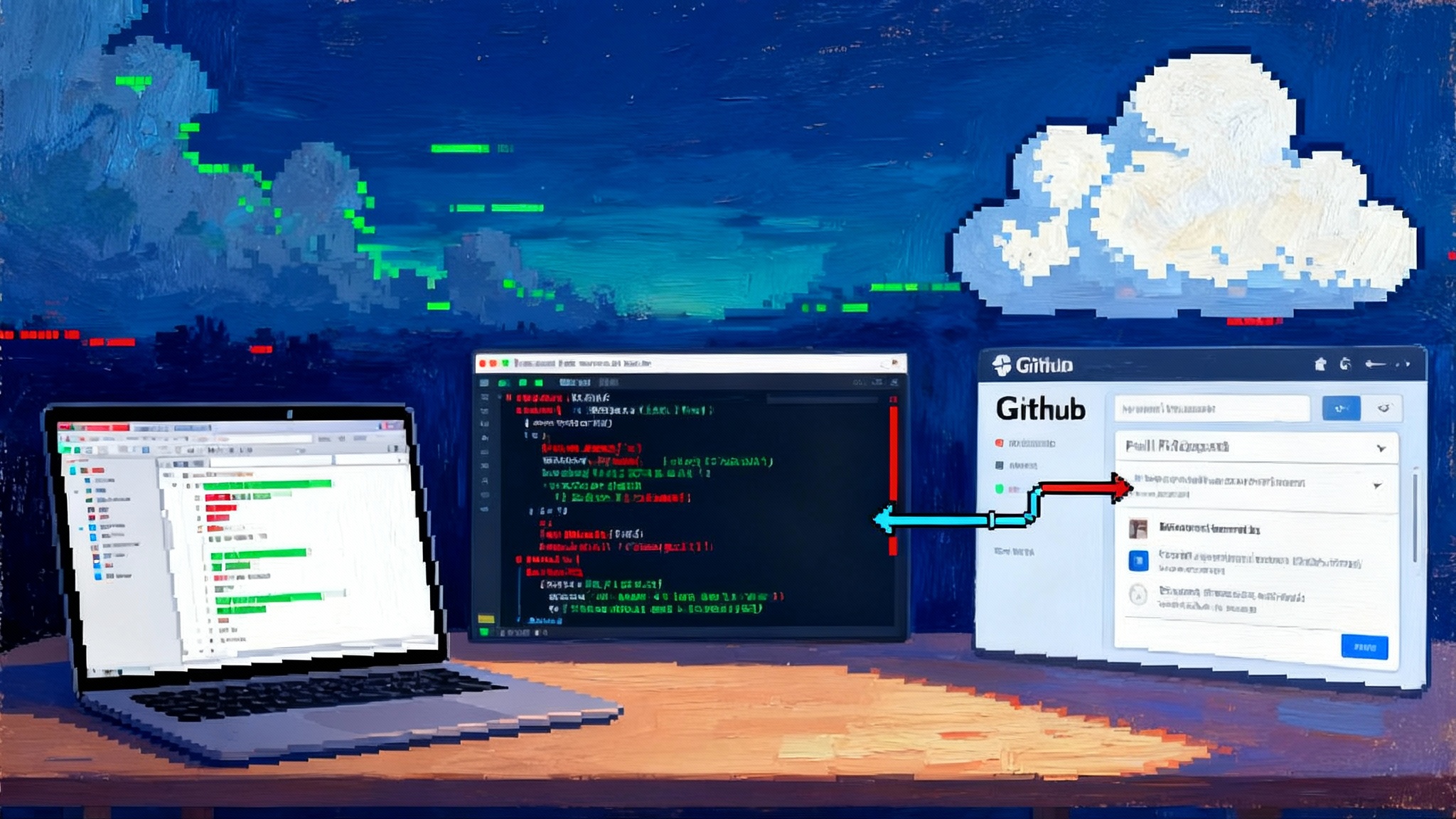Claude joins 365 Copilot: the multi model enterprise playbook
Microsoft just added Anthropic’s Claude Sonnet 4 and Opus 4.1 to Microsoft 365 Copilot and Copilot Studio on September 24 to 25, 2025. Here is a pragmatic playbook for CIOs to route across models, raise reliability, control costs, and govern a new cross cloud trust boundary.

What changed and why it matters
Microsoft added Anthropic’s Claude Sonnet 4 and Claude Opus 4.1 to Microsoft 365 Copilot, with initial availability in the Researcher agent and as selectable models inside Copilot Studio. Customers can opt in, choose models per agent, and note that Anthropic models are hosted outside Microsoft managed environments with their own terms. See Microsoft’s details in the official post on Microsoft's model choice announcement. The announcement was published on September 24, 2025, with early access rolling out through the Frontier Program and admin center opt in controls on September 24 to 25, 2025.
This is the first time Microsoft 365 Copilot explicitly lets enterprises select a non OpenAI model inside a core Microsoft workflow. Anthropic’s models are also available in Copilot Studio for agent building.
The multi model agent era arrives
Your enterprise agents will not be tethered to a single foundation model. You can assemble task oriented agents that:
- Route prompts to different models by task class, risk profile, data sensitivity, or latency constraints.
- Fall back to alternative models when a provider times out, hits quota, or returns low confidence results.
- Compare outputs across models to improve reliability on critical reasoning steps.
If you are mapping out a broader stack strategy, compare this shift with the cloud positioning in AWS Quick Suite agent stack and the operations lens in AgentOps is the moat.
How to structure model routing and fallback
Start simple, then evolve across three layers.
- Policy routing at the tenant boundary
- Default assignments: pick a default model per job family. Send commercial writing to an efficient text model and deep research to a reasoning optimized model.
- Data sensitivity gates: for prompts that may include regulated data, route only to providers covered by your contractual controls and approved residency.
- Jurisdictional routing: if you operate in multiple regions, pin models to approved regions for that tenant segment.
- Skill routing inside the agent
- Intent classification: classify the user task then choose the model. Examples include summarization, tabular reasoning, long context synthesis, or tool heavy orchestration.
- Input shape heuristics: if the prompt includes very long context, pick the model that is most cost efficient at long contexts. If the task needs precise math, pick the model that performs best on your validation set.
- Fallback strategies for resilience
- Provider failover: if provider A times out or is rate limited, retry on provider B with the same tool schema.
- Quality failover: if the output fails a validator or asserts facts without support, re run on a second model or ask a separate judge model to critique and request a revision.
- Cost guardrails: if the token forecast exceeds a ceiling, downshift to a cheaper model or a distilled prompt.
Build routing as policy, not code. Keep configuration alongside DLP and data classification so a change in vendor terms, price, or risk posture rolls out without redeploys.
Reliability gains from comparative reasoning
Single model agents often fail silently. Multi model agents let you detect and reduce failure. Three tactics help:
- Self consistency voting: sample multiple outputs from one model or two providers and accept answers that agree. For structured tasks, require exact match on key fields.
- Cross model critique: have model A produce an answer with supporting evidence, then have model B critique only the reasoning and citations. If support is missing, revise.
- Tool grounded verification: send calculations, date math, or table filters to deterministic tools and use models only for planning and explanation.
Use comparative methods selectively where an error would be costly, such as policy sensitive communications, regulatory responses, or executive briefings.
Cost and performance tradeoffs you can manage
Avoid hardcoding choices based on public price sheets. Manage cost with four levers:
- Context budgeting: cap input context per task class. Use chunking and recall for long synthesis.
- Distillation tiers: let a fast, inexpensive model draft or pre classify, then escalate only hard cases.
- Caching and reuse: enable semantic caching at the system boundary and deduplicate boilerplate context.
- Latency budgets: set a maximum latency per step. If a model often exceeds the budget, switch providers or parallelize steps.
If you enable long context or extended traces, add ceilings and alerts to prevent token surprises.
Governance, audit, and the new shared control plane
When agents span providers, governance shifts from bilateral to trilateral: your org, Microsoft, and the model vendor. Practical requirements:
- Logging scope: capture prompts, model selections, tool calls, and outputs with user and dataset identifiers. Record which provider handled each step.
- Data classification and DLP: apply the same classifiers at the agent boundary that you use for email and documents. If an agent may route externally, block or redact sensitive fields at the boundary.
- Terms and data handling: Microsoft states Anthropic models are outside Microsoft managed environments and subject to Anthropic terms. Legal and procurement should align breach notification, retention, and subprocessor lists with policy.
- Audit evidence: prepare evidence packs with routing policy versions, model versions, timestamps, and the exact prompts and outputs used in decisions.
- Access controls: scope who can select which models in Copilot Studio. Use separate environments for development, staging, and production. Require change approval for routing rules.
For a concrete enterprise case study on controls and observability, see Citi 5,000 user agent pilot.
The cross cloud trust boundary you cannot ignore
Reuters reports that Anthropic’s models for this integration are hosted on Amazon Web Services. That means a Microsoft 365 workflow may route content to a model running on a rival cloud. Review the Reuters report on integration and model this new trust edge before broad rollout.
Practical implications:
- Data transit: ensure TLS policies cover data in transit to the external provider and use mutual TLS or signed requests where supported.
- Residency and sovereignty: confirm which regions will process data and whether any data persists for abuse monitoring or model improvement.
- Key management: if you use customer managed keys in Microsoft 365, document where those protections stop and whether the external provider offers equivalents.
- Incident response: align incident definitions and who notifies whom, with time frames and shared logs.
A pragmatic playbook for CIOs
- When to mix models
- Use a second provider when you need redundancy, a different reasoning profile or tone, or a long context advantage.
- Stay with one provider when the workflow is simple, the data is highly sensitive, or governance is not ready for cross cloud flows.
- Favor diversity for research, planning, data analysis, and code review where comparative reasoning adds measurable value.
- Evaluation and observability tips
- Build a private eval set from your documents and tasks, including tricky tables and policy constrained writing.
- Score on task success and error severity, not just generic benchmarks.
- Track routing decisions with intent labels and token forecasts.
- Add canary prompts that run daily against each provider to detect regressions and latency spikes.
- Use judges carefully and keep human spot checks in the loop.
- Procurement and data residency checks
- Verify data use terms, retention windows, subprocessor lists, and deletion guarantees for each provider.
- Map where data is processed and stored, including global routing and cache behavior.
- Collect SOC 2, ISO 27001, and relevant certifications, and confirm incident response SLAs.
- Negotiate volume tiers, throttling limits, and spend caps.
- Confirm you can allow or restrict provider use per environment and per security group in Copilot Studio.
- Risk scenarios to test before rollout
- Provider outage: simulate a hard fail at Anthropic and verify automatic fallback.
- Latency surge: double 90th percentile latency and confirm alerts and graceful degradation.
- Privacy boundary: feed labeled confidential content and verify DLP blocks egress to external providers.
- Hallucination under pressure: lure models with tricky prompts and require verifiable evidence.
- Prompt injection: probe tool enabled agents with hostile inputs for exfiltration attempts.
- Cost spike: pass very long context and confirm downshifts or user prompts to trim.
Implementation patterns in Copilot Studio
- Model tags and routing: define tags like research, long context, and safe draft. Map each tag to a default provider and a fallback. Use environment variables so you can switch mappings without redeploying.
- Guardrails as policies: codify content filters, allowed tools, and data access scopes as reusable policies. Apply them across models.
- Validation as a first class step: add a judge that checks structure, policy compliance, and evidence. If it fails, revise or switch to a model that is stronger at factual grounding.
- Tool interfaces as contracts: keep the same tool schema regardless of model so you can swap providers without breaking integrations.
- Observability: emit metrics for token usage, latency, and failure reason by provider. Send logs to your SIEM and responsible AI dashboard.
30 60 90 day rollout roadmap
Days 1 to 30: Prepare
- Enable Anthropic access in a sandbox tenant and in Copilot Studio. Set up environment separation, role based access, and budget guards.
- Build your eval set and a small reliability harness. Instrument logging and canary tests.
- Draft routing policies and data handling rules, including what content can cross the external provider boundary.
Days 31 to 60: Pilot
- Select two or three workflows that benefit from deep reasoning or long context. Configure model choice and fallback.
- Run pilots with 50 to 100 users. Hold weekly quality reviews. Tune prompts and routing based on evidence.
- Begin procurement review of provider terms and residency mapping. Document audit trails and evidence packs.
Days 61 to 90: Expand
- Broaden to more departments with clear success criteria. Apply change control to routing policies.
- Switch on comparative reasoning only for high stakes tasks. Keep defaults on a single efficient model.
- Finalize incident playbooks that cover multi provider investigations and user communications.
The bottom line
Microsoft’s integration of Anthropic’s Claude Sonnet 4 and Opus 4.1 into Microsoft 365 Copilot and Copilot Studio marks the start of a practical multi model era for enterprise AI agents. You now have the controls to route, compare, and fall back across vendors. That can raise reliability and resilience, but it also makes you accountable for cost, governance, and the new cross cloud trust boundary. Treat this as a policy driven architecture, with disciplined evaluation and observability, and you can capture the benefits without losing control.








